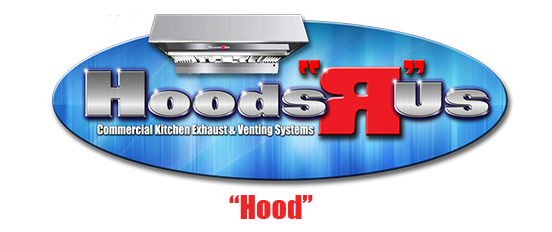Hoods "R" Us provides the highest quality commercial kitchen ventilation systems, quality installation, and turn key operations at competitive prices and fast turnaround!
A Typical Make-Up Exhaust System
A typical kitchen ventilation system includes an exhaust hood or canopy, ductwork, fan system, and a means of providing adequate make-up air. The entire system must constitute a fire-safe assembly within the building.
Exhaust hoods and canopies capture heat and contaminates in the air by means of filters, extraction baffles (cartridges), and water mist systems. There are many style variations of hoods with canopy styles—a large box with and open bottom—being the most common. Styles selection is based on the type of oven and the expected contaminates to be removed. While there are several styles of hoods, all fall within two major categories:
-
Type I hoods carry a listing label and are manufactured and installed according to the manufacturer's and listing agencies' requirements. They are designed to handle grease and include a number of integrated components within the hood.
-
Type II hoods are used in the collection of steam, vapor, heat, and odors—but not grease. The two sub-classifications of Type II hoods are condensate and heat/fume.
Backshelf hood over cookline
Exhaust ductwork provides the means to transfer contaminated air, cooking heat, and grease vapors from the hood to the fan.
-
Ducts accumulate combustible grease and should be constructed from 16- steel or 18-gage stainless steel as per code requirements.
-
The ducts must me securely supported by non-combustible duct bracing and supports designed to carry the gravity and seismic loads as per code requirements, no fasteners should penetrate the duct.
-
The duct is often run inside a shaft enclosure and that enclosure is typically constructed of gypsum board, plaster, concrete, or ceramic tiles and must be an approved continuous fire-rated enclosure.

